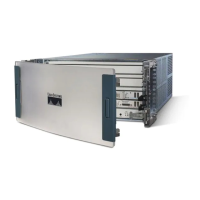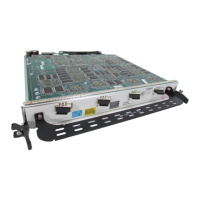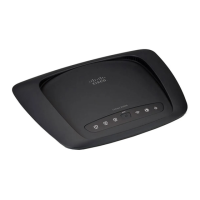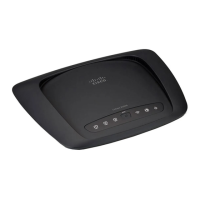Implementing Multicast Routing on Cisco IOS XR Software Cisco ASR 9000 Series Routers
Information About Implementing Multicast Routing
MCC-12
Multicast Configuration Guide
OL-
You can either manually configure a PIM router to function as a rendezvous point or allow the
rendezvous point to learn group-to-RP mappings automatically by configuring Auto-RP or BSR. (For
more information, see the
“Auto-RP” section that follows and “PIM Bootstrap Router” section on
page MCC-12.)
Auto-RP
Automatic route processing (Auto-RP) is a feature that automates the distribution of group-to-RP
mappings in a PIM network. This feature has the following benefits:
• It is easy to use multiple RPs within a network to serve different group ranges.
• It allows load splitting among different RPs and arrangement of RPs according to the location of
group participants.
• It avoids inconsistent, manual RP configurations that can cause connectivity problems.
Multiple RPs can be used to serve different group ranges or to serve as hot backups of each other. To
ensure that Auto-RP functions, configure routers as candidate RPs so that they can announce their
interest in operating as the RP for certain group ranges. Additionally, a router must be designated as an
RP-mapping agent that receives the RP-announcement messages from the candidate RPs and arbitrates
conflicts. The RP-mapping agent sends the consistent group-to-RP mappings to all remaining routers.
Thus, all routers automatically discover which RP to use for the groups they support.
Tip By default, if a given group address is covered by group-to-RP mappings from both static RP
configuration and is discovered using Auto-RP or PIM BSR, the Auto-RP or PIM BSR range is
preferred. To override the default to use RP mapping only, use the rp-address override keyword.
Note If you configure PIM in sparse mode and do not configure Auto-RP, you must statically configure an RP
as described in the
“Configuring a Static RP and Allowing Backward Compatibility” section on
page MCC-27.
When router interfaces are configured in sparse mode, Auto-RP can still be used if all routers are
configured with a static RP address for the Auto-RP groups.
Note Auto-RP is supported in the IPv4 address family only.
PIM Bootstrap Router
The PIM bootstrap router (BSR) provides a fault-tolerant, automated RP discovery and distribution
mechanism that simplifies the Auto-RP process. This feature is enabled by default allowing routers to
dynamically learn the group-to-RP mappings.
PIM uses the BSR to discover and announce RP-set information for each group prefix to all the routers
in a PIM domain. This is the same function accomplished by Auto-RP, but the BSR is part of the PIM
Version 2 specification. The BSR mechanism interoperates with Auto-RP on Cisco routers.
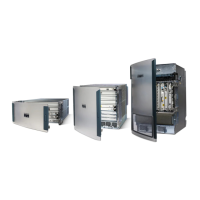
